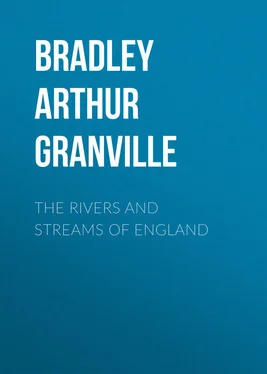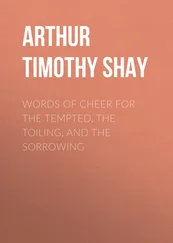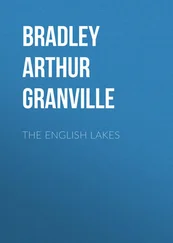Arthur Bradley - The Rivers and Streams of England
Здесь есть возможность читать онлайн «Arthur Bradley - The Rivers and Streams of England» — ознакомительный отрывок электронной книги совершенно бесплатно, а после прочтения отрывка купить полную версию. В некоторых случаях можно слушать аудио, скачать через торрент в формате fb2 и присутствует краткое содержание. Жанр: foreign_language, foreign_antique, foreign_prose, Путешествия и география, на английском языке. Описание произведения, (предисловие) а так же отзывы посетителей доступны на портале библиотеки ЛибКат.
- Название:The Rivers and Streams of England
- Автор:
- Жанр:
- Год:неизвестен
- ISBN:нет данных
- Рейтинг книги:3 / 5. Голосов: 1
-
Избранное:Добавить в избранное
- Отзывы:
-
Ваша оценка:
- 60
- 1
- 2
- 3
- 4
- 5
The Rivers and Streams of England: краткое содержание, описание и аннотация
Предлагаем к чтению аннотацию, описание, краткое содержание или предисловие (зависит от того, что написал сам автор книги «The Rivers and Streams of England»). Если вы не нашли необходимую информацию о книге — напишите в комментариях, мы постараемся отыскать её.
The Rivers and Streams of England — читать онлайн ознакомительный отрывок
Ниже представлен текст книги, разбитый по страницам. Система сохранения места последней прочитанной страницы, позволяет с удобством читать онлайн бесплатно книгу «The Rivers and Streams of England», без необходимости каждый раз заново искать на чём Вы остановились. Поставьте закладку, и сможете в любой момент перейти на страницу, на которой закончили чтение.
Интервал:
Закладка:
But a more accessible celebrity than either Henry the Third or Llewelyn, seeing that he has left us one of the raciest autobiographies in the language, owned and lived in Montgomery Castle, to wit, Lord Herbert of Chirbury. His period was the first half of the seventeenth century, but his exploits were not confined to Montgomeryshire, as his reputation for courage, brains, and eccentricity was a national one and something more. His literary remains, which are numerous, are matter, perhaps, for the specialist, but his autobiography, which in a reprint can be bought for a shilling or two, is the most delightful picture in brief of country and domestic life, of Courts and Camps abroad and at home, of social London, and, above all, of the point of view of a shrewd, original, experienced and travelled man of the world, warrior, courtier, scholar, and theologian. Chirbury is the adjoining parish, and this sombre-looking fortress above the Severn may in a sense be regarded as the cradle of the great race of Herbert, which with its many noble branches and varied achievements is perhaps the most illustrious in England. One branch, in the persons of the Earls of Powis, is still very much represented here on the Severn. For as the river tumbles along in occasional pools where the salmon ought to rise to the fly, but for some inscrutable reason refuse to do so, and in long gliding deeps to Welshpool, Powis Castle, the “Castell Goch,” the “Red Castle” of old Border days, rises out of its wooded park lands on the left bank. Known locally as “Pool,” Welshpool was a Border town like Berwick-on-Tweed and Hay-on-Wye. Two nations dwelt there in separate quarters in a sort of armed neutrality in days when nationality at intermittent periods meant life or death, and still dwell there in long-mingled unity.
Shropshire runs close up to the Severn at Montgomery Castle upon the south bank, and English only is spoken by the Welsh population all down the valley from Moat Lane, though with the spring of the hills to the northward the native tongue still everywhere asserts itself. Around Welshpool, too, the Jones’s, Hughes’s, and Williams’s begin to display the Shropshire type of man as opposed to the Welshman, whether English-speaking or otherwise. But the Severn turns away and clings to its native county for yet another 10 miles. Receiving the first of its three important affluents, the Vyrnwy from the north, it finally takes leave of Wales beneath the shadow of those imposing twins the Breiddons, which like a pair of huge sentinels stand guarding the gateway from the plains of north Shropshire into the hills of Wales. Indeed, the exit of the Severn, by this time a considerable river, from Welsh territory is finely marked, for when it has run a pleasant, uneventful course, touching by the way no place of note, to Shrewsbury, the westward view from the latter is significant and striking. To the last mile of Montgomeryshire, Wales stands finely out above the rich undulations of this once frontier and much harassed county, with singular distinction. The properly constituted Salopian as he stands upon the western outskirts of his town, where his famous school has in recent times perched itself above the high banks of Severn, sees his past laid out before him, like a page of history; the fat Saxon lowland spreading westward for a dozen miles, and the sharp rampart of Wales from north to south as far as the eye can see, height after height, range after range, almost precisely delimiting the outworks behind which for centuries lay a vigilant, unforgetting, and alien people, ready to strike at the first sign of over-confident negligence. This to the indifferent eye may seem ancient history, but it was real enough even as late as the days of Henry the Fourth, when for ten years Glyndwr kept the Border counties in a continual state of apprehension. Part of the walls are still standing, while the Severn, bending in horse-shoe shape round the town, still runs under both the English and the Welsh bridge, and the castle rises above the river-bank whence Henry the Fourth and his army marched out on that July morning 500 years ago to meet the Percies on the bloody field of Haytely.
Shrewsbury is a fine old town, and the encircling Severn adds no little to its pride of pose. It sprang into being on the ashes of the neighbouring Brito-Roman city of Uriconium a few miles down the river, so ruthlessly destroyed by the Saxon pagans. First as Pengwern, then as Schrobbesberie, the principal city of the middle March, it gave in time its name to a county, and kept chief watch and ward against the Welsh of Powys land and of North Wales. It has a great story and stout traditions like all Border towns, and looks it. Of late years it has begun to share the attentions of over-sea visitors with Chester, a fact in no way surprising. For though its antiquities are not so definite and obviously on show, Shrewsbury, unlike the other, is far removed from the disfiguring industrial atmosphere of the North. It is nothing, to be sure, but the historic market-town of a great district; but the latter is so large, so important and interesting, including as it does both English and Welsh territory, that Shrewsbury has at once the peaceful air of a country borough with the size and dignity of something very much more. It is rich in ancient half-timbered houses, often standing in their original narrow wynds or rows. Its sixteenth-century market-hall is one of the best in England. There are some beautiful old mansions too, that were the town-houses of great Salopian families in the days when counties or groups of counties were a social unit unto themselves, and London a far-away rendezvous for great nobles or pronounced courtiers only. Shrewsbury is justly proud of its old churches. The Abbey is a fine Norman building with later additions and much recent successful restoration, and will be the Cathedral when Shropshire – only a matter of time – becomes a diocese. St. Mary’s, however, is the more interesting, being of large dimensions and exhibiting almost every style of architecture from Norman onwards, and lifting a lofty and beautiful spire heavenwards. In its windows is a wealth of old stained-glass, brought at various times from various places both in the locality and on the Continent. Battlefield Church, beyond the town, was raised over the burial pits of the many thousand dead who fell at that great encounter, to say masses for ever for their souls and for those of Henry the Fourth and the pious founders. With its fine tower planted amid the quiet fields upon the site of the very shock of battle it seems to tell a strange story, and to have long outlived the prodigiously important function it was destined for, if numbers counted for responsibility in the repetition of masses.
It was here, of course, that our old friend Falstaff was almost at his very best in the scene of the fight between Hotspur and Prince Henry. To return to fact, however, it was in Shrewsbury market-place that Hotspur’s naked body, after being three days buried, was set up between two mill-stones to show the world that the lion of the north, the terror of his enemies, was in truth dead. It was on Severn’s banks at Berwick, close to Shrewsbury, that this paragon of his day and type, whose very defects of speech the golden youth of England affected, spent the last night of his life; and in the morning, when he was told the name of the place, turned pale and said that “he had ploughed his last furrow,” for a wizard in Northumberland had told him he should die at Berwick, meaning, as he supposed, that more famous one in the north, where every generation of Percy in those days fought and bled. He traced the outline of his hand with a dagger on an oak panel of the house, and it became a tradition of the Bettons, the owners, that if the panel was lost Berwick would go with it, and sure enough the double disaster occurred within quite recent times. Near a century later, Mytton, the Governor of Shrewsbury, refused to open the gates to Henry the Seventh as he was marching to fight for that title on Bosworth Field, swearing he should only enter the town “over his belly.” Matters having arranged themselves pleasantly, however, the too protesting Governor, to save his oath, lay on his back in the gate while Henry stepped over him.
Читать дальшеИнтервал:
Закладка:
Похожие книги на «The Rivers and Streams of England»
Представляем Вашему вниманию похожие книги на «The Rivers and Streams of England» списком для выбора. Мы отобрали схожую по названию и смыслу литературу в надежде предоставить читателям больше вариантов отыскать новые, интересные, ещё непрочитанные произведения.
Обсуждение, отзывы о книге «The Rivers and Streams of England» и просто собственные мнения читателей. Оставьте ваши комментарии, напишите, что Вы думаете о произведении, его смысле или главных героях. Укажите что конкретно понравилось, а что нет, и почему Вы так считаете.












